News
Keep posted on what our department and its members are accomplishing on a daily basis.
Faculty Making a Lasting Impact
Posted on December 27, 2022 | Filed Under: Faculty and News
The students of Dr. Winser Alexander have created the WEA Endowment Committee to honor Alexander’s legacy during his time at NC State.

ECE alumnus honored for supercomputing innovations
Posted on December 21, 2022 | Filed Under: Alumni
Jim Fischer, ECE alumnus, was a key player in several groundbreaking initiatives during his 40-year career at the NASA Goddard Space Flight Center. Learn more about his work.
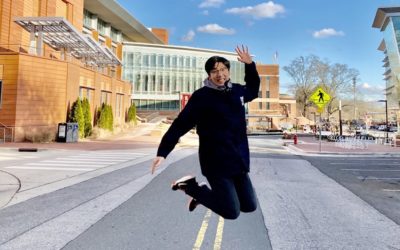
Yuseung Kim finds his American dream at NC State
Posted on December 15, 2022 | Filed Under: Grad Students
Kim, M.S. computer engineering ’22, moves to California to start his new position with NVIDIA after graduation.
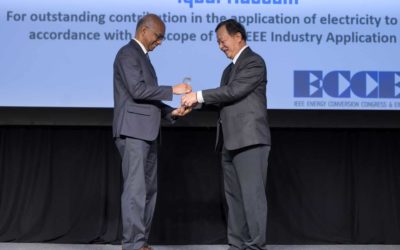
Congratulations to Dr. Husain for the 2022 IAS Outstanding Achievement Award
Posted on December 12, 2022 | Filed Under: Awards
Iqbal Husain was presented with the IEEE Industry Applications Society (IAS) Outstanding Achievement Award in recognition of his outstanding contributions in the application of electricity to industry.
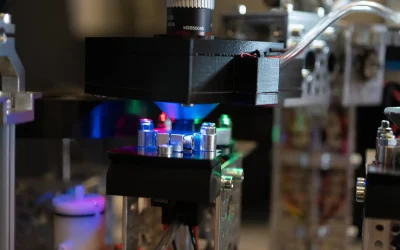
Fossil-Sorting Robots Will Help Researchers Study Oceans, Climate
Posted on December 12, 2022 | Filed Under: Research
New tech from Edgar Lobaton’s lab automates a tedious process that plays a key role in ocean and climate research.
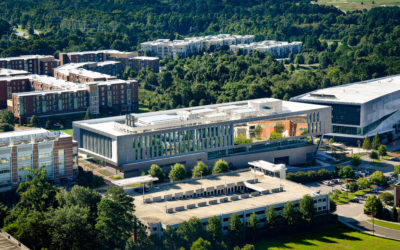
ECE Faculty Receive IEEE Vehicular Technology Society 2022 Best Vehicular Electronics Paper Award
Posted on November 22, 2022 | Filed Under: Awards
Nuria González-Prelcic and Robert Heath, won the IEEE Vehicular Technology Society 2022 Best Vehicular Electronics Paper Award! The award recognizes the best paper relating to Vehicular Electronics published in the IEEE Transactions on Vehi …
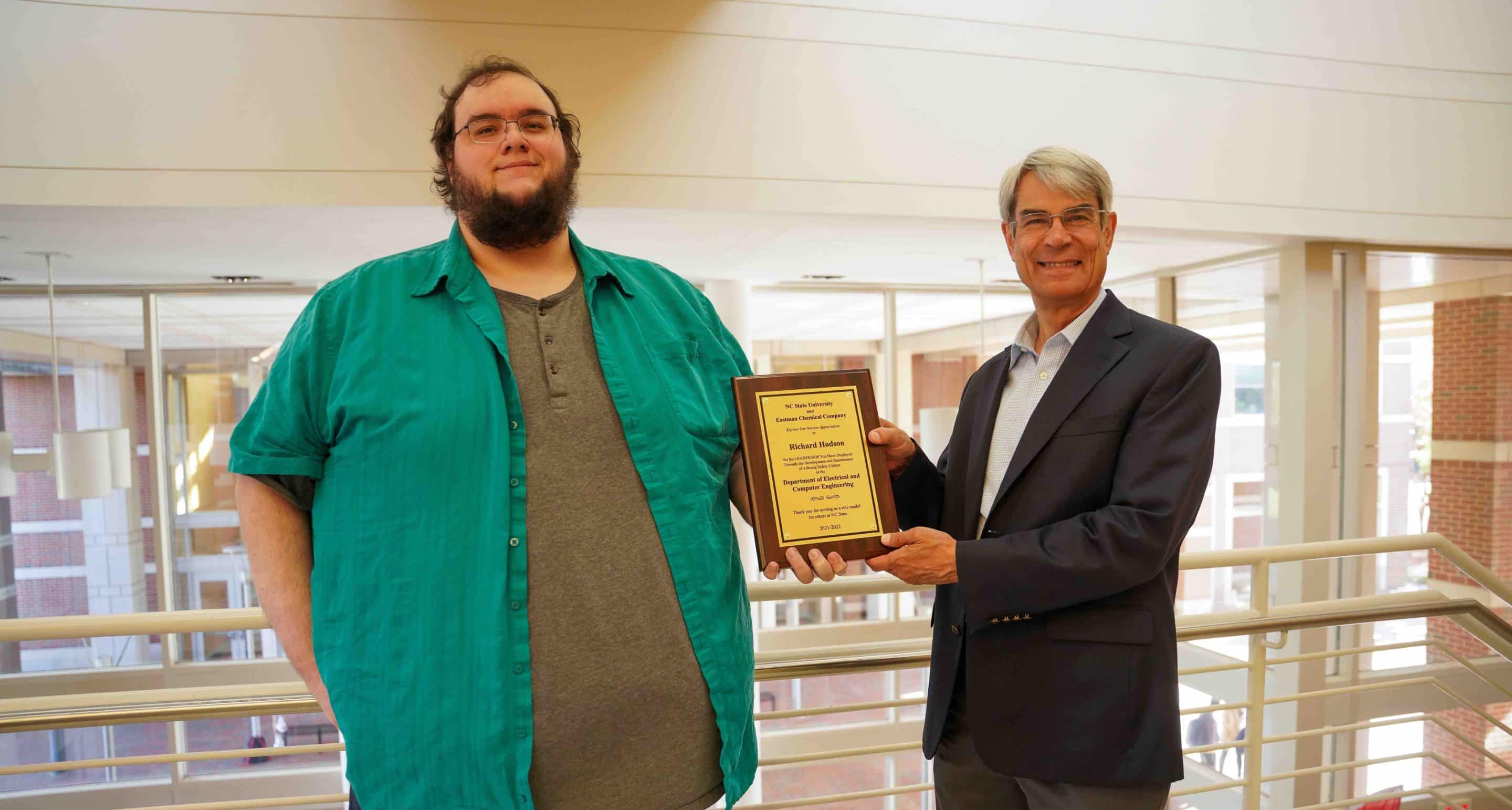
Richard Hodson Receives Campus Safety Award
Posted on November 5, 2022 | Filed Under: News
Richard Hodson, ECE Senior Web Developer, has been selected to receive a Campus Safety Award from NC State’s Environmental Health and Safety Department and Eastman Chemical Company.
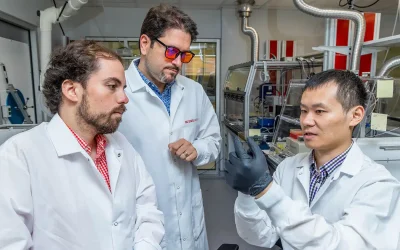
Integrating Robotics, Materials Science to Capture Solar Energy
Posted on November 3, 2022 | Filed Under: News
An NC State professor is leading the development of more effective solar panels cells so that this renewable energy source can replace dwindling fossil fuels. At the same time, this work is establishing more accessible ways to do research i …
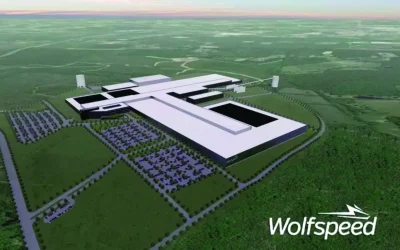
Wolfspeed Ahead: An NC State Spinoff Powers the Future
Posted on October 24, 2022 | Filed Under: News and Research
The company that pioneered LED lighting now looks to improve the efficiency and performance of electric vehicles and other high-power applications. Meet the people building the world’s largest silicon carbide manufacturing facility in Chath …
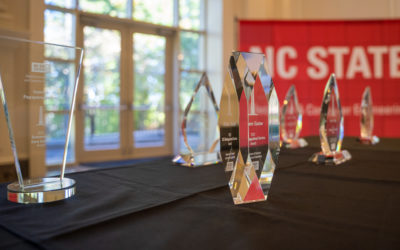
Announcing the 2022 ECE Alumni and Community Awards
Posted on October 21, 2022 | Filed Under: Alumni
At an induction ceremony on October 21, 2022, 5 members of the seventh class of inductees were honored and joined the ranks of the ECE Alumni Hall of Fame, out of over 17,000 alumni, and were joined by two new awards.

Not your average bandage. This NC State invention requires electricity to heal
Currents of electricity flowing through the body are often associated with bad things like electrocution. However, that power can be beneficial when treating chronic wounds or injuries that struggle to heal on their own.
Posted on June 26, 2025
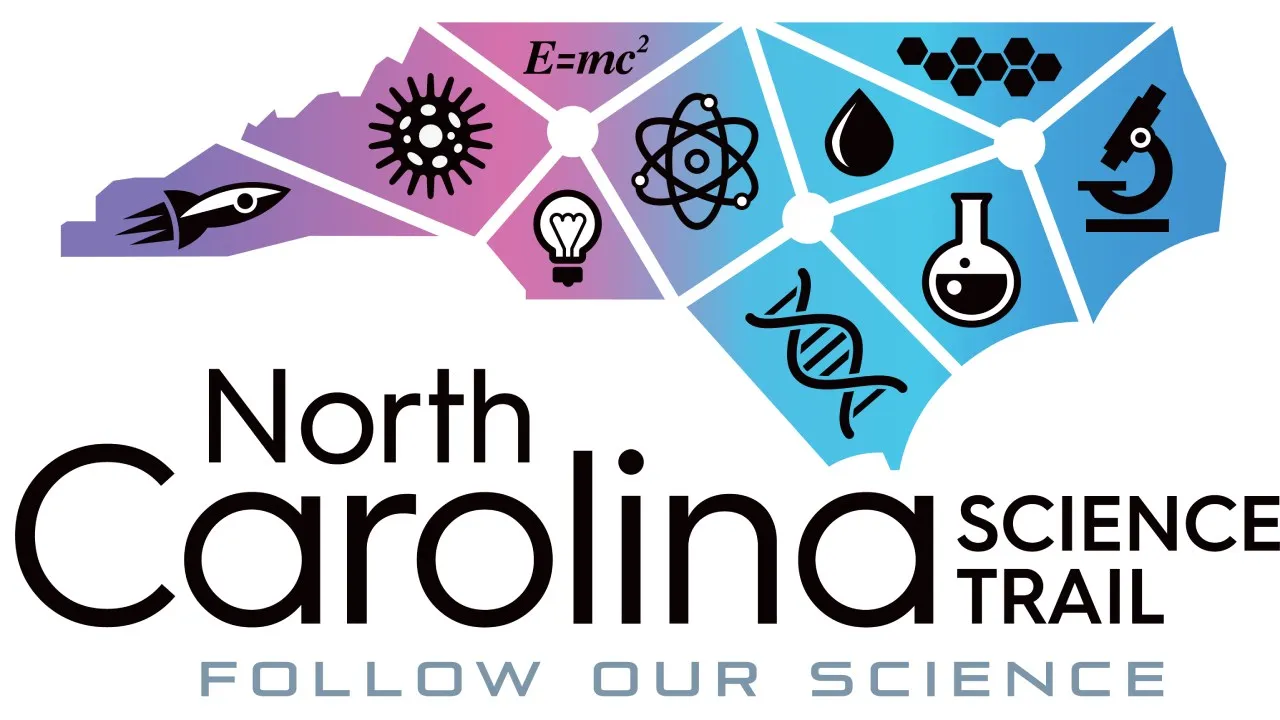
Whirligigs and Innovation: NC State Engineering Students Bring Science to the Park
Posted on February 26, 2025

NC State engineering students monitor wind at Whirligig Park
North Carolina State University engineering students will place sensors on one of the whirligigs at Vollis Simpson Whirligig Park to study the source of wind that powers the structure and to see how efficiently the whirligig is moving.
On Wednesday, the students met with the conservationists who spent years restoring the kinetic sculptures after they were disassembled from Simpson’s Lucama farm and before they were installed at the downtown Wilson park.
“For this project, our main goal is to be able to provide a network of sensors that can give a data set that can be used in the museum for educational purposes and provide some sort of rudimentary risk analysis system for the conservation teams so they can know if there is a whirligig that needs to be looked at,” said Connor Raines, an electrical engineering student at N.C. State.
The experimental sensors will be mounted on BBB Blue Star, which was one of the first whirligigs to be placed in the park.
At 35-feet, BBB Blue Star is one of the largest whirligigs in the park and has 6-inch reflectors on its fan and vane.
“That is the best turning one out there,” said conservationist Joe Justice.
The whirligig is located near the southwest side of the park, which is about 300 feet from the left field fence, and will be about 700 feet from home plate at the new baseball stadium being constructed at the corner of Goldsboro and Hines streets
One sensor will measure tilt, while another measures vibration.
A third will be mounted near the hub that rotates in the wind.
“It will have magnets mounted on the inside,” Raines said. “The sensors detect magnetic fields, so we will be counting how many times the magnetic field changes to estimate the rotation speed.”
Data from the sensors will be transmitted by radio to a “gateway” that will send the information to a computer in the Vollis Simpson Whirligig Park Museum and Gift Shop, located across Goldsboro Street from the park.
Raines said the system could eventually be used for a rudimentary risk analysis.
“If it is vibrating out of bounds, we can send a ping message somewhere to say, maybe something is off-balance,” Raines said.
Student Thomas Van said the sensors run off common AA batteries.
“They are running off of microcontrollers that have been preprogrammed because they are industrial sensors,” Van said. “We didn’t build these ourselves or anything, but they meet our specifications.” The indicator may tell conservationists that the whirligig needs to be examined.
“We are witnesses of the birthing of a new whirligig technology,” said Joe Justice, one of the three conservationists who met with the students.
Data gathered by the sensors will be presented on the Whirligig Park website and be accessible to the general public.
“It is certainly going to reach out to a group of people that might not otherwise be interested,” Justice said.
Roy Palmer, executive director for the park, said BBB Blue Star is going to be the most immediately affected by the construction of the new baseball stadium next to the park because of its location.
“What we are going to have is about eight months until the stadium is finished,” Palmer said. “We’ll have the data set for those eight months. Once the stadium complex is together, we should be able to see how that has affected them.”
The stadium is just one piece of the puzzle, and it wasn’t the driving force for this project. The recent demolition of Farmers Warehouse changed the wind pattern at the park, he said.
Wilson-based Bartlett Engineering & Surveying is a project sponsor.
David Via, a project engineer from Bartlett Engineering and Surveying, is on the board of the Vollis Simpson Whirligig Park.
Other N.C. State students participating include computer engineering students Mario Rosas and Jackson Toburen.
The team will first be working on design for mounting brackets using whirligigs at N.C. State as models.
“We will also be doing a lot of tests simulating the whirligigs at N.C. State just to make sure we know the full capabilities of these sensors before we put them 30 feet in the air,” Raines said. “We plan to have it on BBB Bluestar before May.”
Conservationist Mel Bowen said the sensors will have an opportunity to take baseline measurements before the stadium gets to a point in construction that it will affect the wind moving through the whirligig park.
Posted on February 6, 2025

CBS 17: NC State receives funding for semiconductor electronics research
RALEIGH, N.C. (WNCN) — NC State University is getting new funding from the White House and Department of Defense to further semiconductor electronics research.
Thursday the White House Science and Technology Director, Department of Defense and others gathered at NC State’s Alumni Center to announce $19 million in funding four additional projects for the Commercial Leap Ahead for Wide Bandgap Semiconductors (CLAWS) Microelectronics Hub.
The projects were selected from more than 100 proposals and aim to improve the performance of transistors and switches used in important civilian and military technologies, as well as to increase U.S. economic competitiveness and national security with translational pathways to commercialization.
The hub is one of eight established by the Biden Administration’s Chips and Science Act.
“Wide bandgap semiconductors have been invented here in North Carolina. You see that in companies like Wolfspeed, Kyma Technologies, Adroit Materials so it’s got a great base and great start to do interesting technologies,” said John Muth, Professor of Electrical and Computer Engineering at NC State.
The goal of the Chips and Science Act is to increase production and manufacturing of advanced semiconductors here in the United States. Currently Taiwan tops the list as the largest producer of advanced semiconductors.
“Right here at NC State, with this work that they’re doing, a particular class of wide band gap semi-conductors, these are the devices that we need for advanced radar and power electronics. Our military needs them but we need them for our clean energy future as well and this area’s got just such a tremendous track record in this technology…this is about the next generation,” said Arati Prabhakar, White House Science and Technology Director.
The White House says the U.S. produces only about 10% of the global supply of semi-conductor chips. They hope with programs like these they can increase production over the next decade. You can learn more about the “Leap Ahead” projects here.
Posted on September 19, 2024

ABC 11: CLAWS Hub at NC State receives $19 million from CHIPS and Science Act
RALEIGH, N.C. (WTVD) — Federal officials gathered Thursday at the Park Alumni Center on NC State University’s campus to announce $19 million in federal funding for the CLAWS Hub toward work on semiconductors.
CLAWS, an acronym for Commercial Leap Ahead for Wide Bandgap Semiconductors, is based at NC State and is comprised of NC State, North Carolina A&T State University and six private companies.
“(NC State has) for a long time been a particular leader in these specialty semiconductors that are so important in our military for radar and for power electronics,” said Dr. Arati Prabhakar, President Joe Biden’s Chief Advisor for Science and Technology.
Semiconductors are used in nearly all forms of modern technology, including in cell phones, refrigerators, data centers and military capabilities.
“If you look at emerging technologies like artificial intelligence that are going to require power, you need to be able to get that power there efficiently. If you look at technologies like quantum, you need to have new lasers, new photonic integrated circuits that will be able to make the next generation of quantum computers,” said Dr. John Muth, Director of the CLAWS Hub.
Taiwan is responsible for the overwhelming majority of chip production globally, a point that has concerned US officials from a national security perspective.
“If you look at weapons systems or if you look at airplanes, they need to be able to fly faster. They need to be able to be lighter. They need to be able to have radars that can sense the enemy further away,” said Muth.
“Increased funding has been a game-changer,” Prabhakar said.
“At the time the CHIPS and Science Act passed, the United States had 0% of the global capacity to manufacture advanced logic. And a decade from then, in 2032, because of the CHIPS and Science Act and this huge private capital that it’s bringing with it, we’re going to go from 0% to 28%,” said Prabhakar.
Muth said all four projects will take multiple years, with the total funding set to exceed the $19 million announced Thursday,
“I want to take my experience and academia and from the support that we’re given and push it in the industry. And I hope it gives me a great leap forward,” said Jacob Davis, an NC State Master’s student.
Dan Rogers, an NC State PhD student, added, “I think it’s a really great opportunity to kind of leverage for employers and for future employment opportunities to be able to say that you worked on some of these different innovations.”
Posted on September 19, 2024

Christina Koch is headed to the moon, exactly like she dreamed she would
In 2025, she will be one of four astronauts who will head to the moon as a part of Artemis II. The North Carolina State University graduate stopped by the WUNC studio during a recent visit back to the Tar Heel State.
Posted on May 9, 2024




